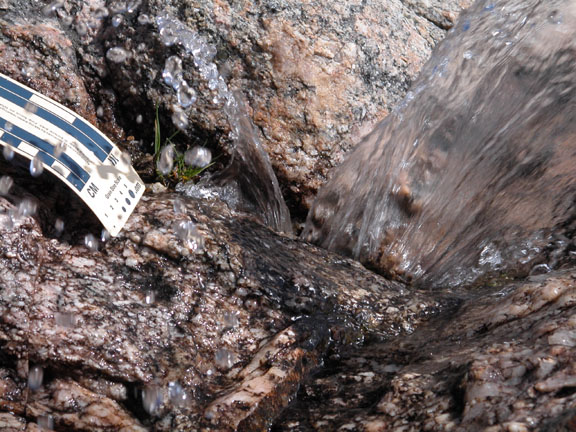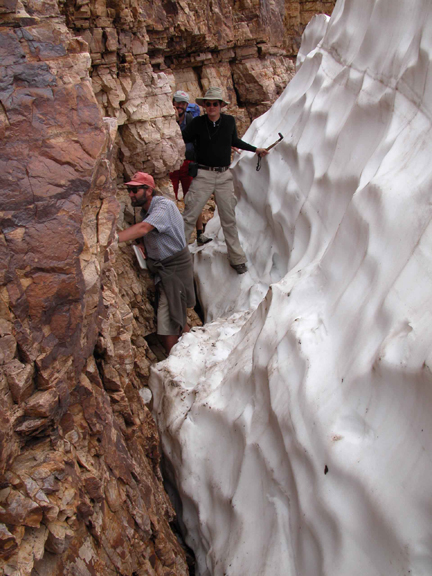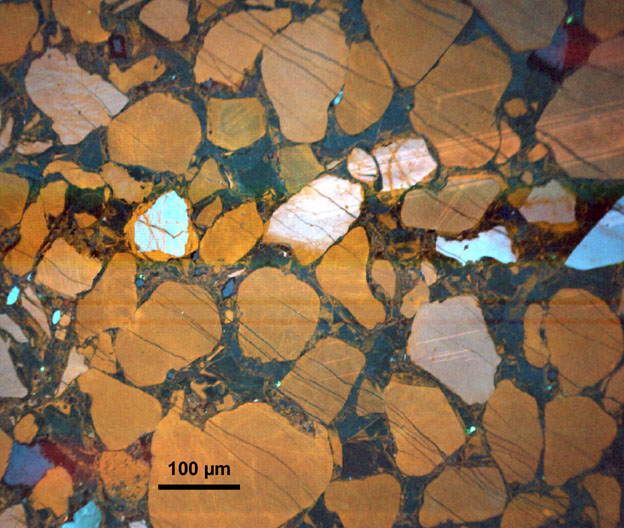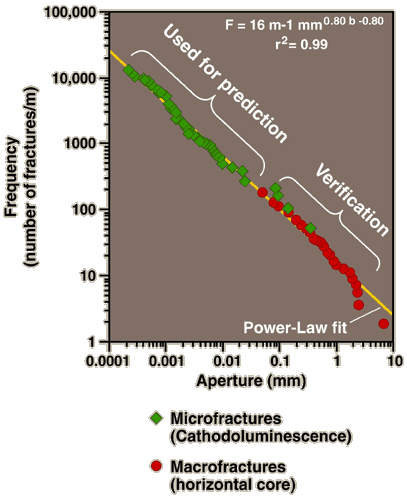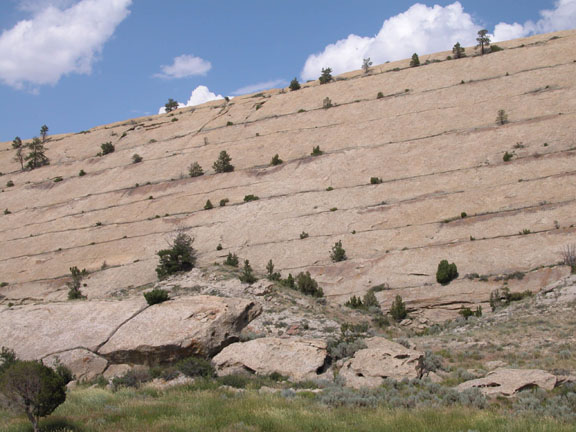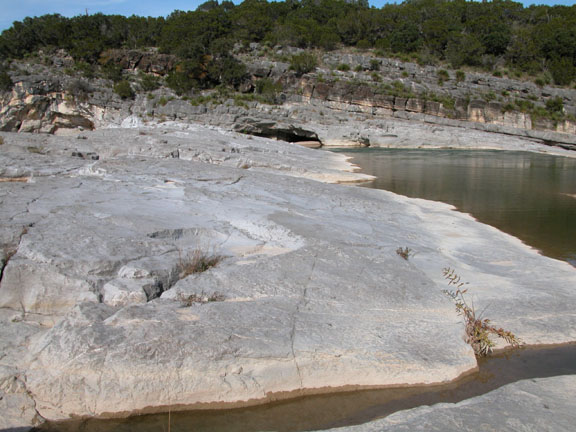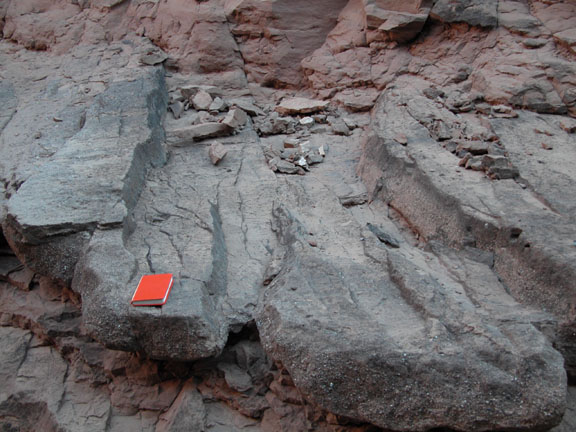|
My research on fractures has been done in collaboration with many others in the Fracture Research and Application Consortium (FRAC) at UT. Previous work on size scaling (Marrett et al., 1999) has given way during the past few years to a focus on spatial scaling. A new analytical technique that I've developed can readily distinguish between and quantify patterns of regularly spaced fractures, fractal clusters of fractures, and randomly located fractures. I've recently begun to test the same approach on faults. Fracture Characterization
One of the
primary motivations for studying fractures is that they commonly
Studying fractures
in the Cambrian Flathead Sandstone atop the Teton Mountains, Wyoming, with the help of PhD candidate Leonel Gomez. Andy Gale, peaking around in back, had just returned
from the South Teton summit at the time of this photo. We have studied fractures in numerous stratigraphic units of the Rocky
Mountains. This summer, Masters candidate Tim Gibbons will begin
research in Montana.
One problem for studying fractures
in subsurface hydrocarbon reservoirs is that boreholes typically intersect few fractures. This limitation
can be overcome by using SEM-CL to study microfractures, such as the ones
above in the Pennsylvanian Weber Sandstone from Rangely field, Colorado. Microfractures are more abundant by orders of magnitude
compared with macroscopic
fractures. Macrofractures are more important to fluid flow, but microfractures are
more amenable to subsurface sampling.
The
abundance of fractures in many sets follows a power law relative to fracture size. Consequently, observations of microfractures can be
used to predict the size and abundance of associated macrofractures.
The example above, from a subsurface core through the Permo-Pennsylvanian Ozona Sandstone, Texas, illustrates that the prediction was verified in
this case.
Another
important characteristic of fractures is the pattern of their
distribution in space. Some fractures, such as those in this bedding-plane
pavement of Cretaceous Frontier Formation sandstone in Wyoming, have approximately regular spacing.
In other cases,
such as this example from the Pennsylvanian Marble Falls Limestone, Texas, fractures are clustered. Each of the erosional
recesses
in this bedding-plane pavement represent clusters of numerous closely spaced fractures, whereas intervening areas contain few fractures. New
techniques can quantify both regularly spaced and clustered patterns, and distinguish them from random fracture arrangement. In the case above, the
fracture clusters represent natural fractals across at least four orders of magnitude in length scale.
I
have begun to study faults using the same techniques for analysis
of spatial patterns. Faults in Miocene sandstones and shales at
A-Bomb canyon, Arizona, are well suited to this approach. For
example, the notebook in the photo above sits at the upper end of a relay
ramp formed in the bedding-plane pavement of a gravel layer.
|
